What to do if Hayward Water Pump check system drive overload?
- SStacie AbbottSep 10, 2025
If your Hayward Water Pump shows a check system drive overload, inspect the impeller, diffuser, shaft seal, and motor for any issues or binding.
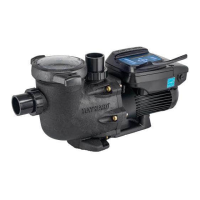
What to do if Hayward Water Pump check system drive overload?
If your Hayward Water Pump shows a check system drive overload, inspect the impeller, diffuser, shaft seal, and motor for any issues or binding.
What to do if Hayward IS3206VSP3 Water Pump check system pump has stalled?
If your Hayward Water Pump displays a check system pump has stalled message, verify the motor connections to the drive.
What to do if Hayward IS3206VSP3 check system pump failed to start?
If the Hayward Water Pump check system indicates the pump failed to start, check the impeller, diffuser, shaft seal, and motor for any issues or binding.
| Brand | Hayward |
|---|---|
| Model | IS3206VSP3 |
| Category | Water Pump |
| Language | English |
Provides an overview of the variable speed pump's primary features and benefits.
Advises users to read the manual thoroughly to prevent injury and ensure proper operation.
Explains safety alert symbols (Warning, Caution, Notice) and their meanings for user safety.
Covers essential safety rules for installation, operation, and general use of the pump.
Details risks of electric shock, mandatory grounding, bonding, and GFCI requirements.
Defines various types of suction entrapment risks including limb, body, and hair entanglement.
Covers pressure, separation, fire, burn hazards, and general operational safety precautions.
Outlines the purpose of the manual for proper installation and operation of the pump.
Lists primary features like magnet motor, hydraulic design, programmability, and control interface.
Provides the physical dimensions for the Hayward 2.70 THP VS pump unit.
Explains how to determine pump operating costs based on power consumption and electricity rates.
Details benefits such as energy savings, improved filtration, and reduced noise levels.
Advises on selecting a suitable location and securely mounting the pump for performance and safety.
Covers recommended pipe sizing and proper plumbing connection techniques for efficiency.
Outlines electrical specifications, voltage considerations, and essential safety rules for wiring.
Details mandatory grounding, bonding, and wiring practices essential for electrical safety.
Explains remote control methods, specific notes for SVRS models, and interface orientation.
Describes the four possible positions for orienting the digital control interface on the pump.
Provides step-by-step instructions for mounting the digital control interface on a wall.
A comprehensive checklist and procedure for completing the pump installation process.
Diagram and instructions for connecting the primary power supply to the pump's terminal block.
Details wiring connections for controlling the pump via Hayward automation systems.
Instructions for connecting third-party pool controls using relay contacts for speed selection.
Wiring guidance for the digital control interface when mounted separately from the pump.
Explains how to wire a remote stop switch for controlling pump operation.
Essential checks and precautions to perform before the initial pump startup.
A detailed guide on how to correctly start and prime the pump for operation.
Explains the function of each button and display element on the pump's control interface.
Overview of the pump's menu hierarchy and the initial information displayed upon power-up.
Guides users through the necessary configuration steps after plumbing and wiring.
Provides a comprehensive explanation of each configurable setting within the pump's menu.
Instructions for setting up and programming the pump's various timer functions and daily schedules.
Guides users on how to set, name, and update predefined pump speed profiles.
Explains how to view diagnostic data like firmware versions, serial numbers, and event logs.
Details the procedure for temporarily stopping and then resuming normal pump operation.
Explains the Quick Clean mode and how the remote stop switch engages.
Routine cleaning and maintenance tasks necessary for optimal pump performance and longevity.
Instructions for draining the pump and protecting it from damage during storage or winter.
Steps to remove motor assembly and diffuser to gain access for shaft seal replacement.
Detailed instructions for replacing the impeller, diffuser, and the shaft seal assembly.
A visual diagram identifying all pump components with corresponding reference numbers.
A comprehensive table listing part numbers, descriptions, and quantities for replacement parts.
Guides to diagnose and fix issues such as the motor not starting, shutting off, or humming.
Solutions for common problems like priming failures, suction leaks, and low flow conditions.
Identifies causes for abnormal pump noise and interference with communication equipment.
Explains system error messages and provides corresponding troubleshooting steps for resolution.
Further guidance for resolving memory, communication, and general system error codes.
Details the limited warranty terms, conditions, and procedures for Hayward products.
Provides the necessary information and fields for registering the pump for warranty coverage.
Presents the regulatory compliance statement regarding FCC rules for the device.
The form to be filled out for registering the pool pump for warranty service and support.
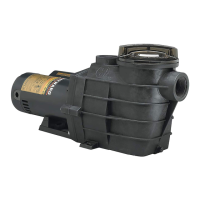
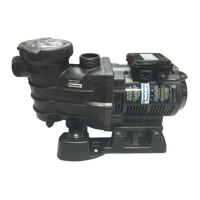
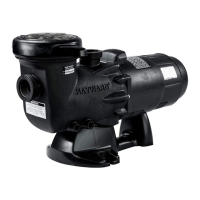
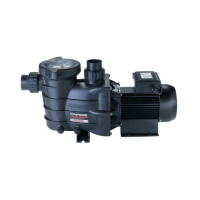
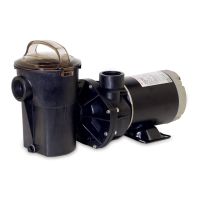
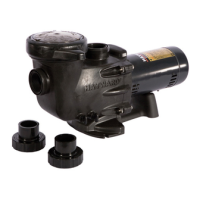
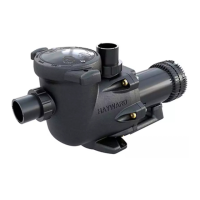
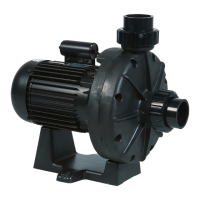
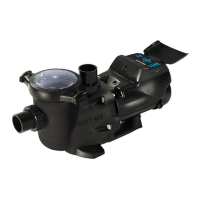
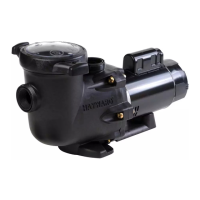
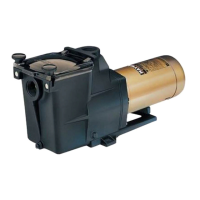
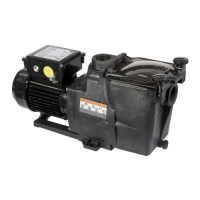
